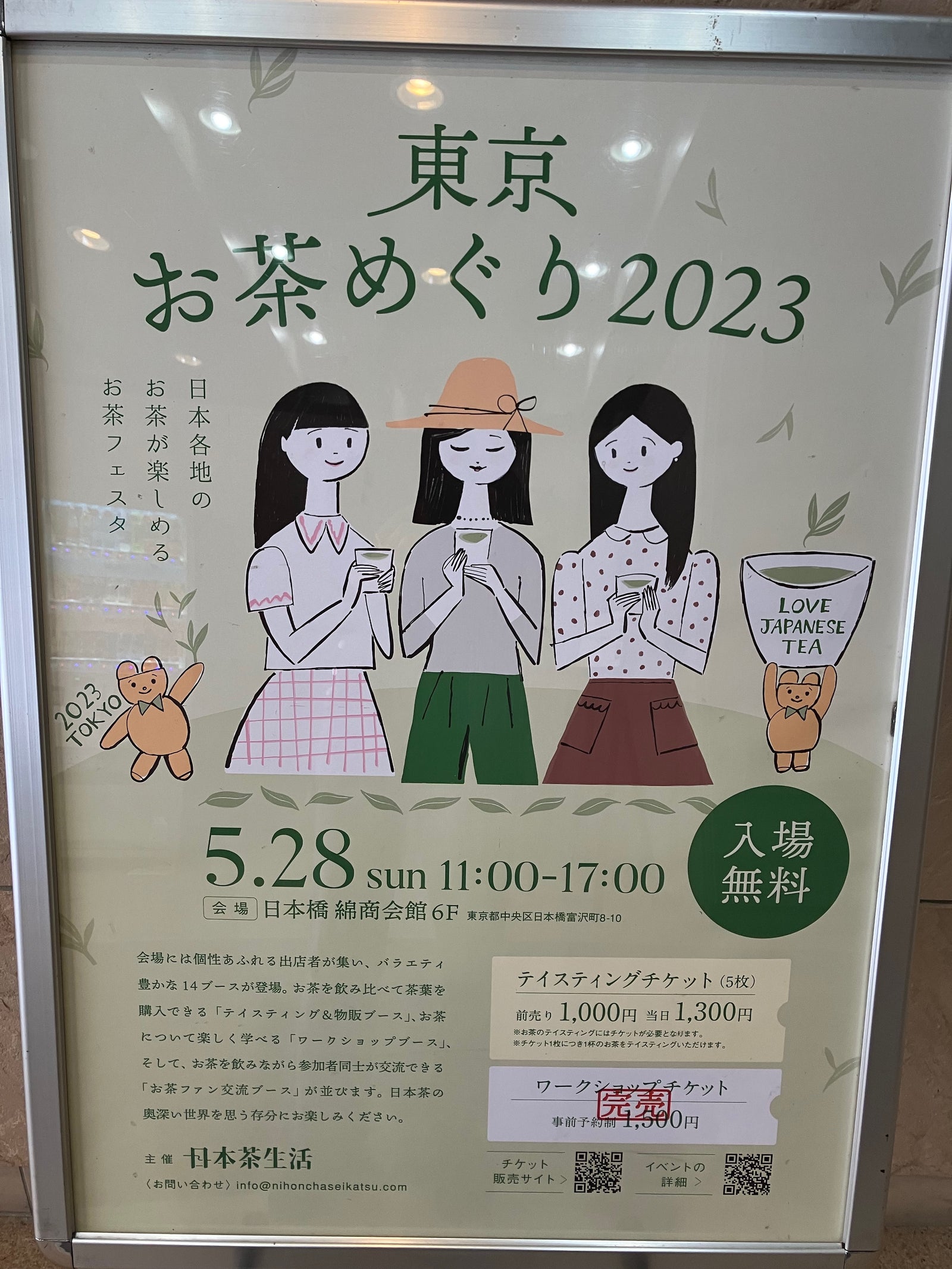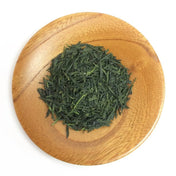On Sunday May 28th there was a tea event in the Nihonbashi neighborhood of Tokyo city, called Tokyo Tea Tour 2023 (in Japanese: 東京お茶めぐり2023). Being back in my motherland this year, I have been fortunate to have had the opportunity to actually visit some tea farmers in person, even some that I have interviewed over the past few years! Yet, this event provided an opportunity to go on a tea tour right in Tokyo because the occasion brought in tea farmers from all over Japan. Moreover, it was an opportunity to try their shinchas, and of course, there is always something new to learn about tea!
At the event, there were 9 booths. Of which 7 were different major tea regions as well as the tea farmer(s) from each of the places. Some of the regions have been covered in the 50 major tea production areas in Japan posts.
- Sonogi, Nagasaki Prefecture
- Minamiyamashiro, Kyoto Prefecture (close to Wazuka)
- Chiran, Kagoshima Prefecture
- Yame, Fukuoka Prefecture (famous for gyokuro) - represented by Kuma Tea Gardens, who we know at Yunomi
- Sayama, Saitama Prefecture
- Shizuoka Prefecture (Shizuoka city, Makinohara, Kawanehoncho)
- Sakawa, Kochi Prefecture
The 8th booth was a tea sweets booth. Tomoko Kanno, chef and patisserie at "Food Sense" makes tea-based baked goods in collaboration with Kaneka Kitagawa Tea Company in Shizuoka Prefecture. Her booth made me think of our very own Sachiko-san, who always has some new recipe to try linked to tea! While at Yunomi, we have the largest selection of Japanese tea from small-scale artisanal tea farms, factories, and merchants; at this gathering, I was only familiar with Kuma Tea Gardens, which made me wonder exactly how many tea farmers there are all throughout Japan!?
Well, onto the details of the event! The event was organized such that one could purchase five tea tasting tickets for 1,300 yen (1,000 yen if one purchased them prior to attending). Although I have helped out at wine tasting events in California, this was perhaps the first time for me to be an active participant of a fun tea tasting gathering. Personally, I enjoy trying single origin teas, especially the uncommon cultivars. A personal new cultivar I tried that day was Harumidori, from the famous Kawane honcho area in Shizuoka Prefecture.
Overall, approximately half (52%) of the 23 different types of teas that could be tried were from the well-known Yabukita cultivar, or a blend with the cultivar. I also noticed that the Sayama tea farmers took pride in showcasing their Sayama Kaori (meaning, fragrance of Sayama) cultivar which is native to that region. In the middle of the event space was also a tea fan interaction booth which served some Japanese herbal teas. They had one of my favorites, Persimmon leaf tea, as well as biwa (loquat) tea and mulberry leaf tea. Another tea at this booth was a cold-brewed goishicha from Kochi Prefecture. I used one of my tea tasting tickets to try this one as I have previously mentioned this traditional bancha but had never actually drank it. I enjoyed it cold (I could imagine it being a nice refreshing drink for the humid summers in Japan!), and it reminded me of another fermented bancha from Kamikatsu Village in Tokushima Prefecture, the awabancha.
 Snapshots from the tea fan interaction booth. First photo shows varying tea leaves. From left to right: mulberry, biwa, persimmon leaf, and goishicha. The photo to the right is a graph which asks participants, “What is your preferred flavor?”. In the diagram, umami is at the top, shibumi (bitterness) to the bottom, refreshing left and rich to the right. I'm curious what the graph looked like at the end of the day...
Snapshots from the tea fan interaction booth. First photo shows varying tea leaves. From left to right: mulberry, biwa, persimmon leaf, and goishicha. The photo to the right is a graph which asks participants, “What is your preferred flavor?”. In the diagram, umami is at the top, shibumi (bitterness) to the bottom, refreshing left and rich to the right. I'm curious what the graph looked like at the end of the day...
With respect to the tea tastings, another one that stood out to me was Kuma Tea Gardens’ Heritage Grade Saemidori matcha. It was more like an espresso matcha, as it was served in a tiny paper cup! But in the moment, I very much enjoyed witnessing the matcha being made. Perhaps, I found it to be a familiar and reminiscent flavor (it is also simply, a delicious matcha!) because this was one of the matchas that we tried living in France and we definitely enjoyed pairing it with French patisserie treats.
In addition to the main tea booths, mini workshop booths were also organized by Japanese tea specialists. While we didn’t take part in any of these workshops, just observing from the outside and reading the workshop descriptions caught my curiosity. For instance, one was on comparing different shaped “yunomi” (Japanese tea cups), and another was on pairing different types of Japanese teas with sweets. Yes, my Japanese tea nerd radar was on!

All in all, we felt the event was successful in attracting engaged and enthusiastic participants. The room felt pretty full and lively, almost crowded at times. People were interacting, being curious about tea, and having a good time. I found it challenging to find an individual at the tea booths who was free. Perhaps, if it were not for my 1-year old whose interest was not in tea tasting but in playing outside, I would’ve stuck around a bit longer. On the way out however, we did manage to grab a shincha from Yame Tea Garden (a new rising cultivar: Kirari 31), and a few other goodies including a lemon hojicha muffin. It was an event which made me have hopes in the potential of Japanese tea. And of course, I am looking forward to trying more 2023 shinchas!

Featured image: Tokyo Tea Tour 2023 poster. The event was organised by Nihonchaseikatsu (meaning, Japanese tea life), a web media which is introducing and helping people navigate the fun and evolving world of Japanese tea.
Have additional insights? Please don't hesitate to post comments and/or questions below. Or directly contact me (Moé Kishida): moe@yunomi.life. Thank you!


